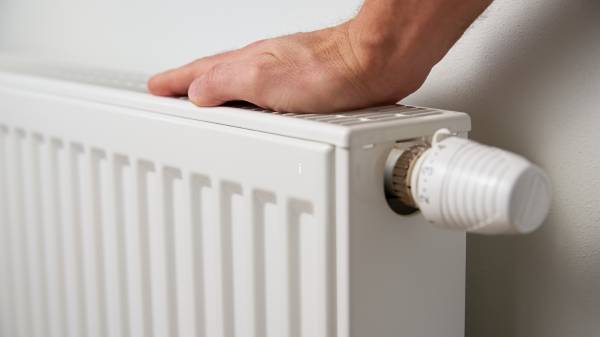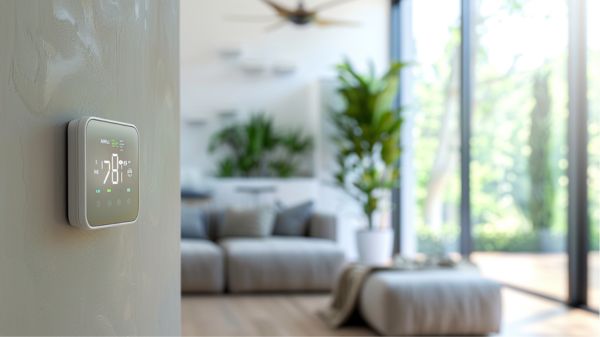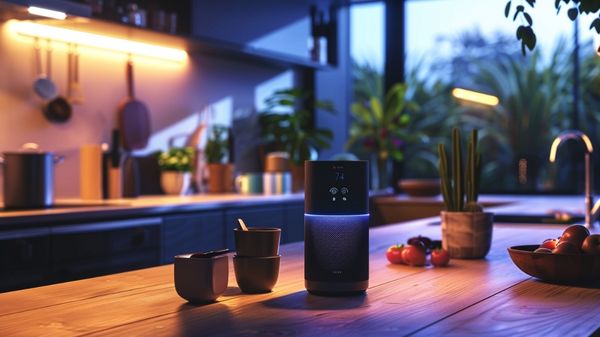Achieving energy efficiency in hydronic heating systems is not only essential for reducing utility bills but also vital for environmental sustainability. In this article, we’ll be discussing some energy efficient hydronic heating solutions to help maximizing your energy efficiency and sustainability at home.
The selection of high-efficiency boilers, such as those that are condensing, plays a foundational role. However, the effectiveness of these systems extends beyond mere equipment choice. Proper installation, diligent maintenance, and the strategic integration of renewable energy sources constitute additional layers that greatly impact overall system performance.
As we explore these elements, one must consider how advancements in technology and design can further optimize these systems, potentially redefining energy efficiency standards in residential and commercial buildings. What are the emerging technologies that might enhance these systems further, and how can we implement them effectively? Let’s explore in more details to find out!
Understanding Hydronic Heating Systems
Hydronic heating systems, which utilize hot water circulated through pipes, offer an efficient method for distributing heat in both residential and commercial settings. These systems capitalize on the principle of heat transfer through water, a medium known for its superior thermal retention compared to air. This fundamental property underpins the energy efficiency of hydronic systems, as water’s higher specific heat capacity allows for sustained warmth with less energy consumption.
Central boilers heat the water, which is then propelled through a network of pipes to radiators or underfloor heating systems. This method guarantees an even heat distribution, eliminating the cold spots typically associated with forced-air systems. The design of hydronic systems also contributes to their efficient heating performance. By minimizing the need for extensive ductwork, these systems reduce heat loss and can be adapted to a variety of building layouts, enhancing their versatility.
To maintain their efficacy, regular maintenance is essential. Confirming the integrity of the piping and the efficiency of the boiler can greatly extend the system’s lifespan, often beyond 25 years. Consequently, a well-maintained hydronic heating system not only promises consistent comfort but also stands as a reflection of sustainable energy use in heating technologies.
Benefits of Smart Controls
Smart controls greatly enhance the operational efficiency of hydronic heating systems, offering precise temperature management and adaptive adjustments based on real-time data.
These advanced systems integrate seamlessly with both indoor and outdoor sensors, enabling not just constant monitoring but also immediate adjustments that optimize energy usage and maintain desired comfort levels. This integration results in substantial energy savings, with potential reductions in energy consumption up to 30%.
The technical sophistication of smart controls allows them to learn and adapt to specific heating patterns, tailoring energy use to actual needs rather than predetermined schedules.
This learning capability guarantees that heating is efficient and reactive to changes, such as varying occupancy or sudden shifts in weather conditions. Furthermore, these systems play an essential role in maintenance by identifying potential leaks or inefficiencies early. Such proactive detection is critical for timely intervention, preventing minor issues from escalating into major repairs and extending the overall lifespan of the heating system.
Incorporating smart controls into hydronic heating systems not only boosts efficiency but also contributes to a building’s market value by aligning with contemporary energy-conscious and sustainability goals.
This modern approach to heating underscores a commitment to both environmental stewardship and economic performance.
Installation Best Practices
To optimize the efficiency of a hydronic heating system, careful consideration must be given to selecting the appropriate equipment that matches the specific heating demands of the building.
The system’s layout should be meticulously planned to guarantee even distribution of heat and minimize energy wastage.
Additionally, establishing a regular maintenance schedule is essential to sustain system performance and extend its operational lifespan.
Selecting Proper Equipment
Choosing the right equipment, particularly high-efficiency boilers like condensing models, is foundational for maximizing the energy efficiency of hydronic heating systems.
Condensing boilers, renowned for their ability to conserve energy, improve energy consumption by up to 15-20% compared to standard boilers. This substantial efficiency gain stems from their ability to condense water vapor in the exhaust gases, thereby recovering its latent heat which is otherwise wasted.
In the quest for energy-efficient heating solutions, the selection of auxiliary components is equally essential.
Implementing variable speed pumps is a strategic choice, capable of adjusting flow rates to meet variable heating demands. This adaptability can curtail pump energy consumption considerably, achieving savings between 30-50%.
Furthermore, the integration of smart controls plays a crucial role in maximizing the energy performance of hydronic systems. These controls dynamically adjust heating output based on real-time data, such as occupancy and exterior temperature changes, potentially reducing unnecessary energy use by 10-30%.
To encapsulate, the strategic selection of high-efficiency heat pumps and boilers, coupled with advanced control systems, forms the cornerstone of deploying effective and sustainable hydronic heating frameworks.
These technologies not only guarantee optimal thermal comfort but also champion energy conservation and operational cost reductions.
Optimizing System Layout
Optimizing the layout of hydronic heating systems is essential for ensuring efficient heat distribution and minimizing energy loss.
Strategic planning of pipe routes can considerably reduce thermal dissipation, especially in sprawling installations. Utilizing a manifold system centralizes flow distribution, allowing for precise control over individual zones. This not only boosts energy efficiency but also tailors heating to specific area requirements, reducing wastage in unoccupied zones.
Incorporating high-quality insulation around hydronic pipes, particularly in areas not conditioned such as basements or attics, is critical. This practice prevents energy loss, ensuring that heat is conserved within the system and delivered effectively to intended spaces.
Additionally, the application of radiant floor heating mats beneath surfaces like tile or concrete can dramatically enhance the heat transfer efficiency, making it an ideal solution for challenging environments.
Implementing a zoning system further refines the functionality of hydronic systems. By allowing independent temperature control in distinct areas, it addresses varied heating needs efficiently, avoiding the unnecessary heating of unused spaces.
Such customization not only elevates comfort but also contributes to considerable energy savings, aligning with the goals of cost-effective and environmentally conscious heating solutions.
Regular Maintenance Schedule
Implementing a regular maintenance schedule is fundamental to maintaining the operational efficiency of hydronic heating systems. This protocol should encompass annual inspections of critical components such as boilers, pumps, and valves. These inspections are essential for detecting inefficiencies or failures early, thereby curtailing downtime and excessive repair costs.
Ensuring that each element operates at peak condition directly correlates with the minimization of energy consumption and the maximization of system efficiency.
Periodic tasks such as bleeding radiators and heating loops are important to eliminate trapped air, which can notably impede heat circulation. The presence of air in the system not only reduces efficiency but also increases the operational strain on the heating apparatus, leading to potential malfunctions.
Moreover, the maintenance routine must include the inspection and cleansing of filters and strainers to prevent blockages that disrupt water flow, thereby avoiding escalated energy demands.
Checking and enhancing the insulation of pipes and connections is equally essential; effective insulation can bolster system efficiency by up to 20%. This is because well-insulated systems maintain heat better, reducing the workload on the heating system.
Documenting all maintenance activities and outcomes is critical for continuous improvement. These records provide invaluable data for refining future practices, ensuring sustained liberation from operational inefficiencies and unnecessary energy expenses.
Future Trends in Hydronic Heating
As we look to the future of hydronic heating, significant technological advancements are anticipated that will transform system efficiency and functionality.
The integration of advanced sensors and machine learning will enable more precise control mechanisms, optimizing energy use based on real-time environmental and occupancy data.
Concurrently, evolving regulatory frameworks will likely mandate the incorporation of these technologies, setting new standards for energy efficiency in residential and commercial buildings.
Advanced Sensor Integration
Integrating advanced sensors into hydronic heating systems enhances real-time monitoring and control, greatly improving energy efficiency and system responsiveness. The implementation of advanced sensor technology allows for fine-tuned adjustments to heating outputs, based on precise data on temperature and humidity, directly targeting system inefficiencies. This maximizes the energy consumption across various zones of a building, guaranteeing that heating is both effective and economical.
| Feature | Benefit |
|---|---|
| Real-time monitoring | Enables immediate adjustments to system operations |
| Occupancy sensors | Reduces waste by heating only occupied spaces |
| Outdoor weather sensors | Anticipates weather changes for proactive adjustments |
| System inefficiency detection | Alerts for maintenance to prevent energy loss |
| Smart controls | Adjusts settings for peak energy use |
The integration of these technologies introduces a level of precision that traditional systems lack. Occupancy sensors play an essential role, greatly cutting down on energy use in unoccupied areas. Additionally, the ability to detect leaks or anomalies through real-time monitoring guarantees that any issue can be swiftly addressed, preventing long-term damage and unnecessary energy expenditure. This approach not only liberates resources but also aligns with modern demands for sustainability and efficiency in building management systems.
Machine Learning Applications
Machine learning’s application in hydronic heating systems represents a notable advancement in optimizing energy efficiency and operational precision. By employing algorithms to analyze historical heating data, these systems can now anticipate future energy requirements. This predictive capability enables the optimization of heating schedules, potentially reducing energy consumption by up to 20%.
Machine learning, integrated with smart controls, empowers hydronic systems to automatically adjust temperatures based on real-time data concerning occupancy and weather conditions. This not only maximizes comfort but also diminishes energy wastage, aligning with the goals of both energy conservation and cost-effectiveness.
Further, the fusion of advanced sensor technology with machine learning enhances system performance by pinpointing inefficiencies and potential leaks, thereby facilitating timely maintenance interventions. These predictive analytics extend the lifespan of hydronic heating installations by preempting problems before they escalate, ensuring continuous operation.
Additionally, machine learning understands and adapts to user behavior patterns, which supports the personalization of heating settings—a step that notably boosts tenant satisfaction without compromising on energy efficiency.
As machine learning technology evolves, its integration into hydronic heating systems heralds a future where energy efficiency and user-centric control converge seamlessly.
Regulatory Impact Analysis
Building upon the technological advancements in hydronic heating, regulatory changes are also shaping the future landscape of this energy-efficient solution. Governments are increasingly aligning regulations with sustainability goals, making hydronic systems more appealing through mandates on energy efficiency and reduced greenhouse gas emissions. The implementation of new building codes is compelling the adoption of these systems, supported by financial mechanisms like rebates and tax incentives to ease the shift for property owners.
The growing emphasis on smart controls within regulatory frameworks is pivotal. These requirements not only enhance the operational efficiency of hydronic heating systems but also guarantee ideal energy consumption, adhering to stringent energy standards. Future legislative efforts are expected to intensify focus on minimizing emissions from heating solutions, consequently cementing the role of hydronic systems in achieving environmental targets.
| Regulatory Aspect | Impact on Hydronic Systems |
|---|---|
| Higher Efficiency Standards | Promotes adoption of hydronics |
| Financial Incentives | Increases affordability |
| Smart Controls Mandate | Enhances system efficiency |
These regulatory changes are not merely compliance measures but strategic steps towards a sustainable, low-emission future, directly influencing the proliferation and innovation in hydronic heating technologies.
Selecting Efficient Boilers
Selecting an efficient boiler is vital for maximizing energy savings in hydronic heating systems, with models that operate at 90% Annual Fuel Utilization Efficiency (AFUE) or higher providing ideal performance. In pursuit of such efficiency, several key factors must be considered to guarantee the selection of an ideal boiler system.
- Condensing Boilers: These boilers are a prime choice for energy-efficient hydronic heating. By utilizing exhaust gases to preheat incoming water, condensing boilers can achieve efficiency ratings as high as 98%. This not only conserves energy but also greatly reduces heating costs.
- Proper Sizing: Confirming that the boiler is correctly sized for the space it needs to heat is imperative. Oversized boilers tend to engage in short cycling, which not only diminishes energy efficiency but also increases wear and tear on the system components.
- Modulation Technology: Advanced boilers equipped with modulation technology adjust the burner output based on real-time heating demand. This dynamic adjustment maximizes fuel usage and minimizes waste, leading to higher overall system efficiency.
- Efficient Design: Choose boilers designed for easy access and maintenance. Although regular maintenance is crucial, the design should facilitate straightforward inspections and cleaning to preserve its efficiency and extend its operational lifespan.
Importance of Regular Maintenance
While selecting an efficient boiler is foundational for energy conservation, the ongoing maintenance of hydronic heating systems plays an equally important role in sustaining peak performance and efficiency.
Regular maintenance is essential, encompassing routine checks on boilers, pumps, and pipe networks to assure operational integrity and durability. These proactive measures directly influence energy efficiency by ensuring that each component functions as intended, thereby reducing energy consumption and enhancing overall system effectiveness.
The process of air removal from heating loops, vital for eliminating flow obstructions caused by trapped air, exemplifies a specific maintenance task that markedly boosts heating efficiency. Periodically bleeding radiators prevents this common issue, thereby sustaining the thermal output at ideal levels.
Additionally, annual inspections and cleanings are indispensable to prevent scaling and corrosion, which can severely degrade system efficiency. These interventions help avoid extensive repairs, thereby minimizing operational costs over time.
Incorporating smart controls into hydronic heating systems also revolutionizes maintenance strategies. These advanced technologies can detect leaks and anomalies early, facilitating swift corrective actions that preempt major failures.
Smart controls therefore serve as an essential component in a holistic maintenance strategy, considerably aiding efforts to reduce energy usage and maintain system efficiency at its theoretical maximum.
Advantages of Zoning Controls
Zoning controls in hydronic heating systems offer the significant advantage of allowing tailored temperature settings across different areas of a building, resulting in both enhanced comfort and substantial energy savings. These controls facilitate refined management of heating systems, directly impacting both the efficiency and operational cost of heating large or complex structures.
Here are key benefits of implementing zoning controls in hydronic heating systems:
- Energy Efficiency: By only heating areas that are occupied, zoning controls can reduce total energy consumption by up to 30%. This is especially significant in buildings with intermittent occupancy across different zones.
- Individualized Comfort: Each zone can be controlled independently, allowing for customized temperature settings that match the specific comfort preferences of occupants in various spaces, thereby enhancing occupant satisfaction and productivity.
- Integration with Smart Thermostats: Smart thermostats work in conjunction with zoning controls to automatically adjust temperatures based on real-time data about occupancy and external weather conditions, thereby maximizing heating efficiency.
- Cost Savings: Enhanced control over where and when heating occurs minimizes wasteful energy use, translating into lower utility bills and operational costs over time.
Integrating Renewable Energy Sources
Integrating renewable energy sources with hydronic heating systems offers a sustainable approach to reducing both energy consumption and carbon emissions. By deploying solar thermal systems, these setups harness solar energy to preheat water, greatly lowering operational costs. This integration not only taps into an inexhaustible resource but also enhances the system’s efficiency and reduces its carbon footprint.
Biomass boilers represent another effective integration, utilizing renewable materials such as wood pellets or chips. This method supports a circular economy by promoting the use of sustainable fuel sources, thereby decreasing the overall environmental impact of heating systems. The synergy between biomass boilers and hydronic heating optimizes energy use and contributes to considerable emission reductions.
Moreover, we can synchronize heat pumps, including ground-source and air-source types with hydronic systems to extract environmental heat. These pumps, achieving energy efficiencies of 300% to 400%, remarkably outperform conventional heating methods. Additionally, integrating solar photovoltaic panels to power system components like circulation pumps further emancipates the system from grid dependency.
These renewable integrations not only elevate the energy efficiency of hydronic heating systems but also position them as frontrunners in sustainable building technology, potentially qualifying for government incentives and fostering broader adoption of green practices.
Optimizing System Insulation
Optimizing insulation in hydronic heating systems is vital for enhancing energy efficiency and reducing operational costs. Proper insulation acts as a key barrier against unnecessary heat loss, guaranteeing that energy is conserved and heating requirements are minimized. By focusing on thorough insulation strategies, one can greatly bolster the system’s efficiency and contribute to both economic and environmental liberation.
To achieve ideal insulation, consider the following approaches:
- Insulate Pipes and Tanks: Encase all hot water pipes and storage tanks with high-quality insulating materials like fiberglass or foam. This not only retains heat but also reduces the frequency of heat cycles required by the boiler.
- Boiler and Heating Loops: Apply robust insulation solutions around the boiler and exposed heating loops to prevent energy dissipation and enhance system performance.
- Enhance Building Envelope: Verify the building envelope, including walls, floors, and ceilings, is tightly insulated. This reduces the overall heat demand and maintains a consistent internal temperature.
- Maintenance: Regularly check and replace damaged or worn-out insulation. This practice is vital for maintaining the integrity and efficiency of the heating system over time.
Monitoring and Adjusting Settings
Regular monitoring and precise adjustment of water temperature and flow rates are fundamental for maintaining the ideal performance and energy efficiency of hydronic heating systems. Targeting a boiler temperature between 140°F and 160°F maximizes thermal transfer while minimizing heat loss, important for residential applications. Continuous observation guarantees that the system operates within these parameters, preventing inefficiencies.
Advancements in smart controls have revolutionized how we manage heating settings. These systems utilize sensors to adjust temperatures automatically based on real-time data inputs such as occupancy patterns, external temperatures, and time variations. Such dynamic adjustments can lead to significant energy savings, reducing operating costs by 20-30%. In addition, integrating smart technology facilitates proactive system management. By analyzing performance data, we can make adjustments to optimize energy usage continually.
Additionally, routine procedures like air removal from heating loops are essential. Confirming efficient water flow is maintained, this process eliminates potential cold spots and enhances overall system efficiency by up to 15%.
Furthermore, zoning capabilities of thermostats allow for differentiated heating schedules across various building areas, potentially cutting energy consumption by 10-35%. These strategic interventions are critical for achieving liberation from high energy costs and environmental impact.
Conclusion
In summary, enhancing the energy efficiency of hydronic heating systems requires a multifaceted approach. By selecting high-efficiency boilers, optimizing insulation, and incorporating smart controls with zoning capabilities, significant energy savings are achievable.
Integrating renewable energy sources further reduces environmental impact and operational costs. Continuous monitoring and precise adjustments of system settings are essential to maintain peak performance. Collectively, these strategies represent a sustainable path forward in the evolution of heating technologies.




